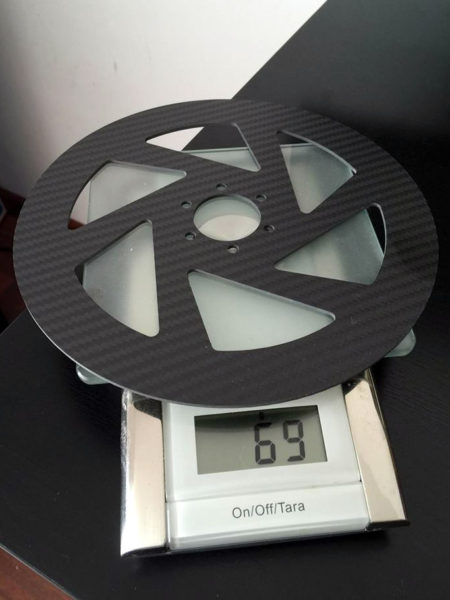A few years ago Spanish motorcycle company Alpha got a bit of a resurrection and at the same time made the transition also into e-bikes. That crossover brought some unconventional solutions for their core two-wheeled vehicles, but also led to some more out of the box thinking that yielded something cool for us cyclists. Alpha now has what they say is the lightest ceramic disc brake rotor available. From just 32g for the 140mm carbon ceramic rotor, there’s no arguing that the Ceramic Rotor RS can shave some weight off your bike, but the real question is how it performs? Well, together with ceramic brake pads Alpha claims that it outperforms steel rotors and is rated from road & cross, all the way up to DH & even trials…
The rotors are manufactured in Spain using what Alpha calls the latest ceramic polymer technology. The result is claims of better heat management, improved braking in both wet and dry conditions, long wearing, and of course super light weight. This isn’t the first time we’ve seen carbon/ceramic rotors, but while we hadn’t tried those from Scappa, our first impression from the Kettle ones wasn’t so confidence inspiring. Alpha claims new tech that offers improved performance, so we are waiting and hoping to learn more.
The single thickness, unvented 6-bolt rotors are a fairly thick at 1.9mm, making them possibly a tight fit with some of the brake setups out there. (1.5-1.8mm is what you typically see in stainless steel rotors.) To get that full road, cyclocross, XC, enduro, DH & trials functionality, they start out small at 140mm and grow up to 203mm. The one trick may be that they claim to need ceramic disc brake pads, which Alpha doesn’t really elaborate on.
We asked for more info and they tell us that they are referring to organic-ceramic pads which contain ceramic fibers. The thinking here is that you don’t want any metal fibers like you would find in semi-metallic or sintered pads, which would damage the carbon ceramic surface of the rotors. We have seen from other carbon rotors that you needed metallic pads as organic ones didn’t last very long, so it would be interesting to see how these last.
The rotors aren’t cheap at 102-120€ a piece, but in an early start of Black Friday sales, they’ve dropped the prices by up to 45%. That means you can get a 140mm rotor for just 56€, the 160mm for 67€, 180mm for 74€ & 203mm for 98€. They are certainly light though. On Alpha’s own scales they come in at 32g for 140mm, 40g for 160mm, 56g for 180mm & 69g for 203mm ones. Who is going to give them a try, maybe we’ll have to…?






